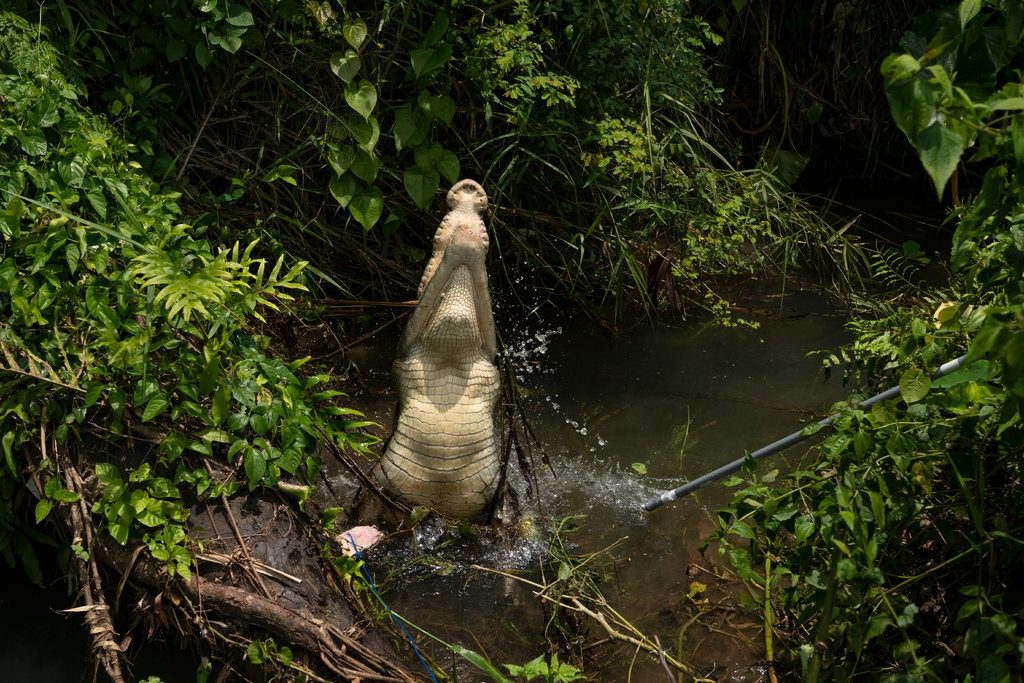
Yusuke Fukuda and Sam Banks, biologists from Australia, traveled in March to East Timor, one of the world's least developed countries, to investigate what has become a deadly national mystery: Why are so many Timorese being killed by crocodiles?
Crocodile attacks here have increased 20-fold in the past decade, numbering at least one death a month in a country of 1.2 million people.
"We became concerned after many people were taken by crocodiles in East Timor," said Mr. Fukuda, a Ph.D. candidate at Australian National University in Darwin, adding that it had taken years of bureaucratic wrangling between the researchers and the governments in both Australia and East Timor to be permitted to conduct research.
The people of East Timor, also know as Timor-Leste, have for centuries revered and even worshiped crocodiles.
The country's origin myth is about the crocodile Lafaek Diak, who out of friendship for a human boy sacrificed itself to become the child's home — the island of Timor, with each scaly bump on its back turning into a mountain.
Timorese call crocodiles "abo," the Tetum-language word for grandparent, and killing them is culturally taboo as well as illegal.
The animals are so admired here that victims of attacks are often too ashamed to report them, which is why many believe the actual number of attacks is higher than the official statistics suggests.
The Timorese most at risk from crocodiles are those living on the banks of the countless riverways of this island, or along its coast. Using the rivers — whether to collect water, fish for food, bathe or do laundry — is a part of their daily life.
Researchers have found that nearly 83 percent of those attacked in East Timor in the past 11 years were subsistence fishing, using small canoes or wading in the water.
Many locals do not believe that native crocodiles are behind the increase in attacks; they blame migrants, or murderous "troublemakers," who they say play by a different set of rules than the local "grandfathers."
Demetrio Carvalho, East Timor's secretary of state, summed up the theory. "The people believe that these crocs are our ancestors, and ancestors don't go attacking people," he said. "Our grandparents don't kill us."
Enter the Australian researchers. After a bumpy eight-hour journey along the roads of East Timor's northern coast, the men arrived in the isolated town of Lospalos, home to some of the biggest and most dangerous crocodiles in the country.
Their goal was to test the locals' theory by trying to determine whether the killer crocs were saltwater crocodiles from Australia, one of that country's most feared and dangerous animals.
After poaching was banned in Australia in the 1970s, saltwater crocodile populations exploded. The animals have recently been found in areas that were previously considered unsuitable or too remote.
East Timor is about 280 miles from the animals' regular range in northern Australia, a lengthy but manageable swim for a powerful animal that can grow up to 20 feet long and weigh more than 2,000 pounds.
"After several days swimming, these crocs would be very hungry and dangerous to come across," said Mr. Fukuda, the researcher.
(Read more here)



Who? Was there first.
IF it's not elephants, tigers etc, etc, the list goes on.
73% water, and the rest of Earth's surface, we "all", have to live on together, peacefully.